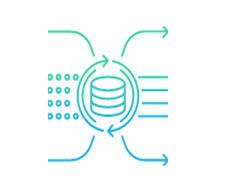Due to the hyper growth of data based transactions, the amount of data generated is ever growing by leaps and bounds. Further, as data-centric businesses continue to scale up, there has been a significant increase in the volume of data generated, collected, stored and analysed by large enterprises. High volume, high velocity data is commonplace as applications rely on real-time user data. This makes database management a mission critical task to the success of any organisation which relies on customer acquisition, operational expertise and business development among other aspects. Thus, data warehousing or the storage and retrieval of data for analytical purposes has emerged crucial to quickly identify, update and replicate the changes made to data in real-time for faster, better data insights.

If your business is built on an Oracle database, then one of the most commonly used practices for data management is called Change Data Capture (CDC). Oracle CDC is a technology used for identifying, capturing and updating changes made to a database and making updated data available for consumption by users and applications. Oracle Change Data Capture is based on the principle of publishers-subscribers, wherein publishers refer to the database users who can make changes, and subscribers refer to the applications or users which refer to the changes in data.
Broadly, there are two modes of Oracle CDC, namely – Synchronous and Asynchronous. Synchronous CDC is executed using triggers. Asynchronous CDC is implemented using redo logs. The next question is – what is the importance of CDC in a data pipeline? Essentially, Change Data Capture enables real-time data replication and migration for real-time systems. This facilitates use-cases like real-time data analytics for recommendation engines.
Let’s understand the different replication types of Oracle CDC briefly:
Using Timestamps:
Timestamps are used for recording the date and time when a particular record was interested or updated inside a database. They can be used for replicating the modified records. One of the main disadvantages of using timestamps for changing data capture is that queries need to run on source, which leads to high overheads.
Using Triggers:
Triggers are used for defining tables where data changes are to be made. Triggers can be collected into the change table using timestamps. The disadvantage of using triggers for change data control is that they lead to massive overheads.
Using Logs:
Log-based CDC is the most preferred method which can replicate all the changes accurately and simultaneously, without causing overheads on the source system.
To sum it up, without Change Data Capture, the insights derived from data could be inaccurate due to system latency causing staleness of data. Further, CDC can also serve as a data backup tool as it continues to fetch real-time data from source to endpoint.
If you are all set to leverage the power of real-time data analysis and insights for your business, it’s time to make use of a high performance CDC replication tool like Bryteflow for Oracle CDC to save time, costs and resources.
Here’s how it works – BryteFlow utilises log-based change data capture (CDC) using which companies can merge data from various sources such as – Oracle, Salesforce, SQL and SAP and transform user data for machine learning and artificial intelligence ready use-cases. Most importantly, Bryteflow’s data replication has zero impact on source data.
BryteFlow goes beyond the basics of Oracle CDC and provides high throughput for data reconciliation in real-time, and is robust enough to ingest massive datasets with up to terabytes. With its built-in multi-threaded configuration for data extraction and loading, Bryteflow is significantly faster than competing tools in the market.
The best part? With Bryteflow, you do not have to invest resources as it is a fully automated, no-code environment from start to finish! Bryteflow’s unique Oracle replication architecture is built from the ground up for seamless and secure data extraction, merging,masking or type 2 history.
Here are the key highlights of BryteFlow’s data replication for Oracle CDC:
- Real-time data replication with high performance
- Multi-thread, log-based change data capture with higher throughput
- Completely codelessa and fully automated data ingestion
- Fully automated DDL creation on the destination
- Time-stamped data replication with no impact on source
Using BryteFlow’s simple, intuitive, point-and-click interface, your Oracle data can be readily replicated without the need of any coding or dedicated resource. It is completely possible to access, merge and remodel data without spending massively!
Oracle CDC with Bryteflow is always available and ready to support Snowflake, SQL Server, Amazon S3, Amazon Redshift, Azure, ADLS Gen 2, BigQuery and Apache Kafka,
Don’t worry if the server fails in a rarer event, because Bryteflow is fully capable of automatic reconfiguration, which means the data replication will resume itself from where it left off. What about security? Bryteflow’s Oracle replication is fully encrypted with enterprise grade security tokens to mask sensitive data from prying eyes.
It’s time to simplify Oracle data integration with Bryteflow and scale your organisation’s analytics, learning and intelligence capabilities. Get your free trial today and experience a seamless, secure and real-time way of Oracle data replication. See Bryteflow in action and skip the hassles of manually checking or monitoring the data replication process again.

Namaste UI collaborates closely with clients to develop tailored guest posting strategies that align with their unique goals and target audiences. Their commitment to delivering high-quality, niche-specific content ensures that each guest post not only meets but exceeds the expectations of both clients and the hosting platforms. Connect with us on social media for the latest updates on guest posting trends, outreach strategies, and digital marketing tips. For any types of guest posting services, contact us on info[at]namasteui.com.

